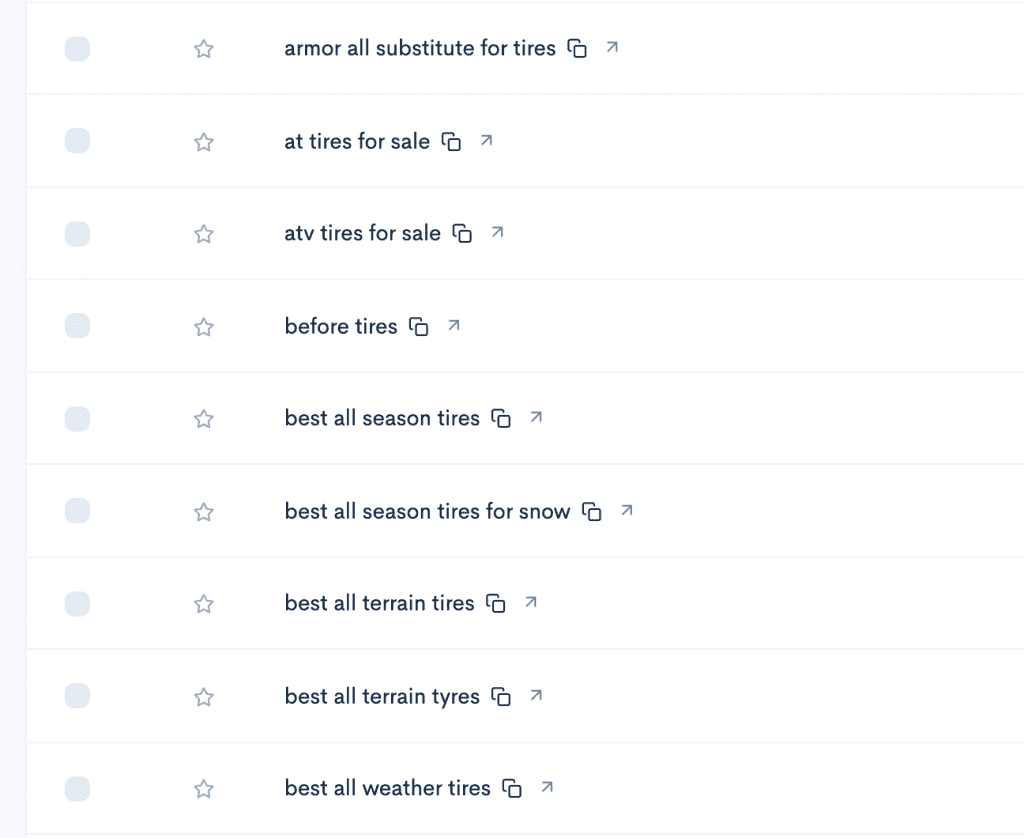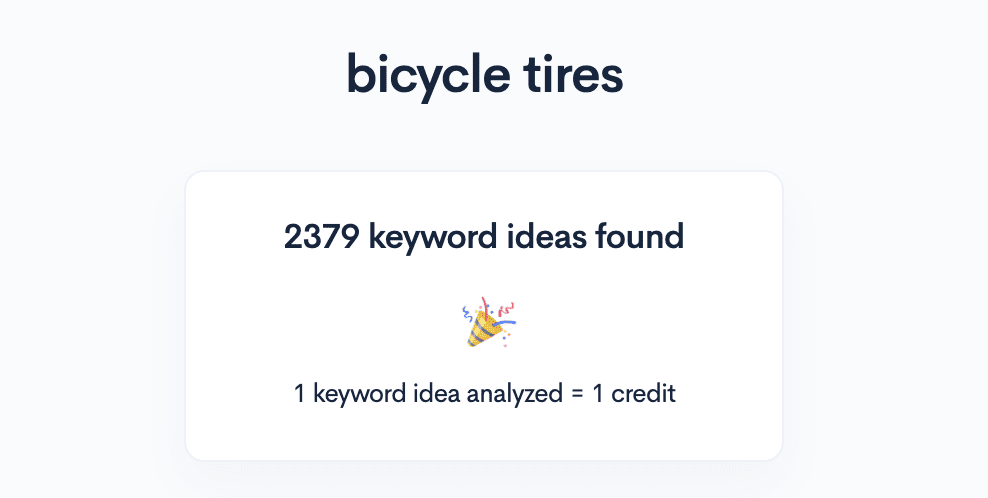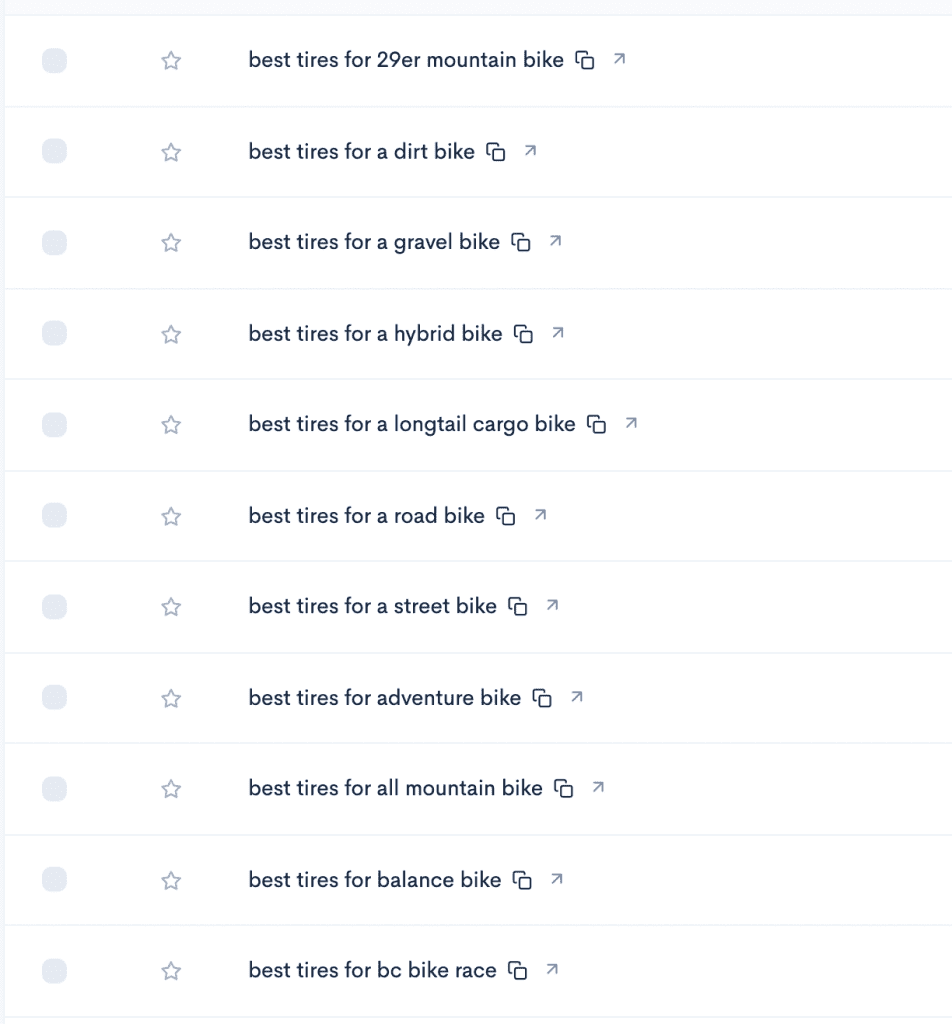LowFruits Case Study Site, Month 1
Dim
Hey there! I’m Dim, and I’m building a blog from scratch.
This blog will also be a case study on how LowFruits (lowfruits.io) can help you find untapped keywords and rank faster, even with a just-registered domain name with no authority.
The rules of the game ?
I will reveal the niche in my Month 6 update, and the website in the Month 9 post. In the meantime, I’ll keep you up to date on the key stats—including traffic and revenue—and tell you what I think they mean.
What niche did I choose ?
The niche is relatively seasonal and undoubtedly competitive.
Still, I have identified a few underserved corners out there, and my plan is to build a top-notch blog with well-written, to-the-point content that readers will actually want to read more of.
Over time, you and I will see exactly where this plan takes me and whether my initial hypothesis proves true.
I registered the domain name on October 12, 2021, so it’s about as new as they get.
No prior history of ownership, no aged or expired domains.
So what’s the plan ?
For the first few months, I will focus my time and money on publishing at least 6 articles per month.
Slowly but surely, I’ll start building links, but not until I have reached a good 30-40 posts on the blog that these links can lead to.
I’ll be doing all my keyword research in LowFruits and creating a hit list of blog post topics for myself and my team of freelance writers to work off of.
Mid-month, I’ll share some metrics along with lessons I have learned and things that have happened in the past 30 or so days.
My team and I will publish under pseudonyms. In the beginning, I will draft the majority of the posts myself.
I do this with all my sites, as it allows me to get a feel for the niche and develop an editorial tone and voice that I can codify and systematize for the other writers.
Once I achieve this goal, I will take a step back and focus on delegating low-value tasks and growing the editorial team with talent while focusing on other, higher-value activities to boost conversions and streamline operations.
If and when I get to that moment with this website, I’ll show you exactly what those activities are.
Not too bad a plan, I know.
But we still have a long way to go, and we don’t really know if we will ever get there.
So pop a bag of popcorn in the microwave, follow along, and wish me luck.
Why Do a Case Study ?
Why not, actually?
There’s not enough of that on the Internet—especially for creating websites from scratch. Another, highly selfish reason is that a case study website is easier to sell if it is well done, and it’s been a while since I’ve sold a website.
Public success or public failure ?
Maybe it’s because public success feels great, but the fear of failure is overwhelming.
This isn’t the case with me; I’ve failed more often than I’ve succeeded, and I’ve usually learned more from these failures than from my successes.
Or it could be because every time someone does a case study like this and reveals the name of their website, at least a dozen others piggyback on the keyword research, and the more successful the website is, the more copies of it appear on the Wild Wild Web.
On the other hand, hiding in the shadows doesn’t protect you from malicious people. I’ve had negative SEO attacks aimed at my sites, even when I hadn’t made them public. And competitors get inspired by my research—and my content—at almost every step I take.
That’s the law of the jungle, kids. No one has said that the game we play is easy. And if they did, now is a good time to look at the refund terms of the course.
Also, I have just the right tool to try to make this a success, and that tool is LowFruits.
A year from now, I want to show you how a domain name that cost me no more than ten dollars can become a consistent source of revenue with good old research and planning.
From time to time I’ll also give “pro tips” on how to use LowFruits. So stay tuned, even if you’re not that interested in case studies, because these tips will show you how to make the most of the tool for your website.
Key Metrics
Content
| Total Posts Published | 6 |
| Posts Published in Year 1, Month 1 | 6 |
| Posts Published in Year 1, Month 2 | – |
| Posts Published in Year 1, Month 3 | – |
| Posts Published in Year 1, Month 4 | – |
| Posts Published in Year 1, Month 5 | – |
| Posts Published in Year 1, Month 6 | – |
| Posts Published in Year 1, Month 7 | – |
| Posts Published in Year 1, Month 8 | – |
| Posts Published in Year 1, Month 9 | – |
| Posts Published in Year 1, Month 10 | – |
| Posts Published in Year 1, Month 11 | – |
| Posts Published in Year 1, Month 12 | – |
Rankings
| Date Checked | October 31, 2021 |
| Avg. Position (Google, USA, Mobile) | 0 |
| Avg. Position (Google, USA, Desktop) | 0 |
| Positions in Top 3 Results | 0 |
| Positions in Top 10 Results | 0 |
| Positions in Top 100 Results | 0 |
Traffic
| Time Period | October 1, 2021 – October 31, 2021 |
| Monthly Pageviews | 1.3k |
| Avg. Engagement Time | 4m 28s |
| Engaged Sessions / User | 1.8 |
| Pageviews / Published Post (PPP) | 216.6 |
Note: It’s still early, and the site has only been ranked for its own name.
So 90% of the traffic is coming from me and Paul, and the numbers aren’t very meaningful. “
Oddly enough, we had some organic visitors (or bots?) from Baidu, the equivalent of Google in China.
Earnings
| Time Period | October 1, 2021 – October 31, 2021 |
| Total Revenue Since Start of Site | $0 |
| Total Revenue YTD (2021) | $0 |
| Monthly Revenue | $0 Of which $0 from display adsOf which $0 from affiliate commissions |
| Revenue / Published Post (RPP) | $0 |
Month 1 Write-Up
I found a great domain until …
There’s nothing like getting your hands on a free .com domain name that has never had weird Chinese spam sites under it (before you register a domain name, you should always check with Archive.org’s Wayback Machine to see if it’s been owned before).
And yet, I found it.
Hurriedly, I whipped out my credit card and bought the domain name to get ahead of anyone else who might have discovered it at the same moment.
Then, feeling inspired, I poured myself a cup of coffee (my cup is half the size of my head, and, by the way, my head is pretty big), rolled up my sleeves, and got down to work on the website.
That domain wasn’t my website’s current domain, in case you are wondering. Let me explain.
Little did I know that just a week or two after buying Domain Name #1, even after checking Google search results and searching for trademarks at WIPO, which you should always do, a startup would launch a product with the same name. This product, of course, was developed in secrecy and launched with a bang.
That’s the Internet for you.
Since I was not in the mood for exchanging emails with lawyers, I took the website off the net, put the domain up for sale and started looking for another, hopefully equally good .com domain.
Try # 2
It took a while, but after a few hours I was back. A short, punchy, memorable domain name emerged, and it seemed like the perfect play of words for a blog on this topic.
A second round of scouring Google search results and searching WIPO for trademarks turned up nothing, so I whipped out my credit card again and registered—déjà vu—Domain Name #2.
The next day I manually migrated the WordPress instance from one add-on domain of my hosting account to another, updated some values in wp-config.php and the MySQL database to reflect the domain change, then opened Canva and rewarded the logo.
Next, it was time to do some keyword research and write my six posts for the month.
What kind of seed keywords I use with LowFruits
You can think of LowFruits as the fastest, most SEO-savvy virtual assistant you have ever worked with.
Type in a keyword or two, and LowFruits sets out to explore the Internet for search terms, spitting out dozens to hundreds, sometimes thousands, of ideas within minutes (depending on the keyword and the competitiveness of your niche).
To make the most of LowFruits, you need to learn/become better at a couple of things :
1. Feeding it with good seed keywords for your niche
2. Selecting which search terms to create content for first
My friend Paul, the creator of LowFruits, has made both easy for you.
The seed keyword is the keyword you enter into LowFruits, which then serves as the basis for discovering untapped, potentially profitable keywords for you as a content creator.
When entering “good” seed keywords, the Goldilocks principle applies: your keyword should not be so broad that you get too many, too irrelevant results.
Nor should it be so specific that you get none.
Let’s say you run a cycling blog, and you want to write about bike tires.
“Tires” is not a good seed keyword because it’s just too general of a term. You’ll get results for bicycle tires, car tires, motorcycle tires, tractor tires, truck tires… pretty much for any piece of machinery that needs rubber wheels to move around.

So “bicycle tires” is a better seed keyword.
Still, it will return a lot of results, and there’s something to be said for digging deeper into search intent.

How to get very specific keywords ?
To achieve this, wildcards (*) are your friend.
“Best tires for * bike” for example, would generate a list of good results for you to analyze.

If the list is still too big, you can always go even more narrow, like “tires for mountain bike” or “slick tires for * bike.”
Or, to not waste credits, you can read through the results and hand-pick which ones to analyze.
As you will see when you use the tool for your own website, the right seed keyword makes all the difference.
It probably depends on the size of your niche, but I tend to get the best outcomes from seed keywords that return around 25 to 100 results.
It takes a while to get the hang of it. So play around with the tool and watch the results come in until you’re happy with both relevance and granularity.
Believe me, you’ll know when you’re ready.
Once you’re in the process of building up a good list of keywords, how do you choose which ones to create content for first?
Look for search terms with low fruits in the top three results. There’s even a filter for that, try it out by toggling the “Top 3” switch on and off in a search.
Who I Am
Hey!
My name’s Dim.
Thanks for reading (or skimming) this far.
I started my first site in 2007 after I stumbled upon a blog about making money online. I’ve been buying, growing, and selling sites ever since.
These days, I own an indie media company and run an email newsletter for online publishers called “Publetise.”
Don’t be a stranger: Subscribe to my newsletter at Publetise.com and get my best strategies and tactics delivered to your inbox once a week.
Hello,
Curiously, I jumped in just to see where this project is going to get.
I will try to follow along, and keep myself updated about your journey.
I am nowhere close to your experience, but I did buy a domain name and started a website on October two, found it difficult to produce content around the topics of the {Niche} I chose.
Did not know much about the best keyword analysis, but I am learning step by step.
Curious about the way you’ll go about this, I will follow your story.
Hey Abderrazek,
Thank you for following along and wishing you best of luck!
Tell me, what about producing content did you find the most difficult?
Dim
Thanks for doing this!
I’m curious as to how many articles it is OK to write for the results.
Like is it OK to write about all the results that meet your criteria?
1. best tires for dirt bike. <—— One article
2. best tires for mountain bike <—— One article
3. best tires for road bike <—— One article
etc.
Thanks for the case study!
Hey, Bob,
Great question!
In your example, I would definitely publish separate “Best This For That” posts for each bike type.
To create trustworthiness for the reader and authority in Google’s eyes, I’d add a few additional sections after the product picks, such as “Who this guide is for,” “What makes a good tire for an X bike,” “Common mistakes when buying tires for your X bike,” etc.
Dim